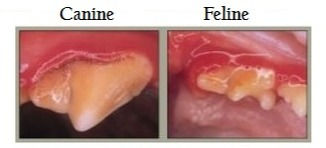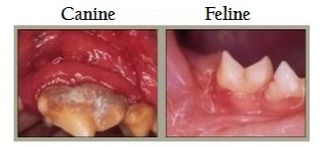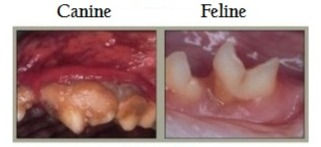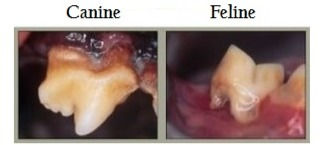Stages of Pet Periodontal Disease
- Olivia
- Feb 21, 2023
- 2 min read
February is National Pet Dental Health Month! This year, we are here to help you floss out any questions you may have when it comes to periodontal disease and how it affects your pet.

According to the American Veterinary Medical Association (AVMA), periodontal disease is one of the most frequently diagnosed health problems in cats and dogs. Signs of this condition include bad breath, stained teeth, mouth pain, receding gums, and tooth loss. Another significant result of periodontal disease is often the presence of harmful bacteria which can spread to the rest of the body causing heart, liver, and kidney issues.
So how do we identify periodontal disease in pets? Let us break it down into the main 4 stages:

Stage 1: Gums are swollen and red (Gingivitis), and there is a noticeable build-up of tartar on the teeth.

Stage 2: Gums have become more swollen and are starting to recede from the bone. Bone loss can also be seen on dental x-rays.

Stage 3: More severe bone loss can be seen. Gums have receded even more.

Stage 4: The highest stage of periodontal disease. Severe tartar build-up is present and bone loss has led to tooth damage. Gums continue to recede. This stage is where a concern for oral bacteria affecting other parts of the body is at its highest.
While periodontal disease is not ideal in pets, there are a number of options when it comes to treating and managing it. The majority of pets with periodontal disease will need an initial dental cleaning, which is a procedure where pets go under anesthesia in order to get their teeth cleaned both above and below the gum line. In certain scenarios, some teeth may also need to be removed during this procedure if they have sustained too much bone loss or damage. Once a pet gets their dental cleaning, it will be important to maintain their oral health through regular brushing, dental chews, and water additives.
No matter what level your pet’s oral health is at, we are here to help you get their mouth in tip top shape! For more information on pet dental health and periodontal disease, visit the ‘Dental Services’ page on our website.

